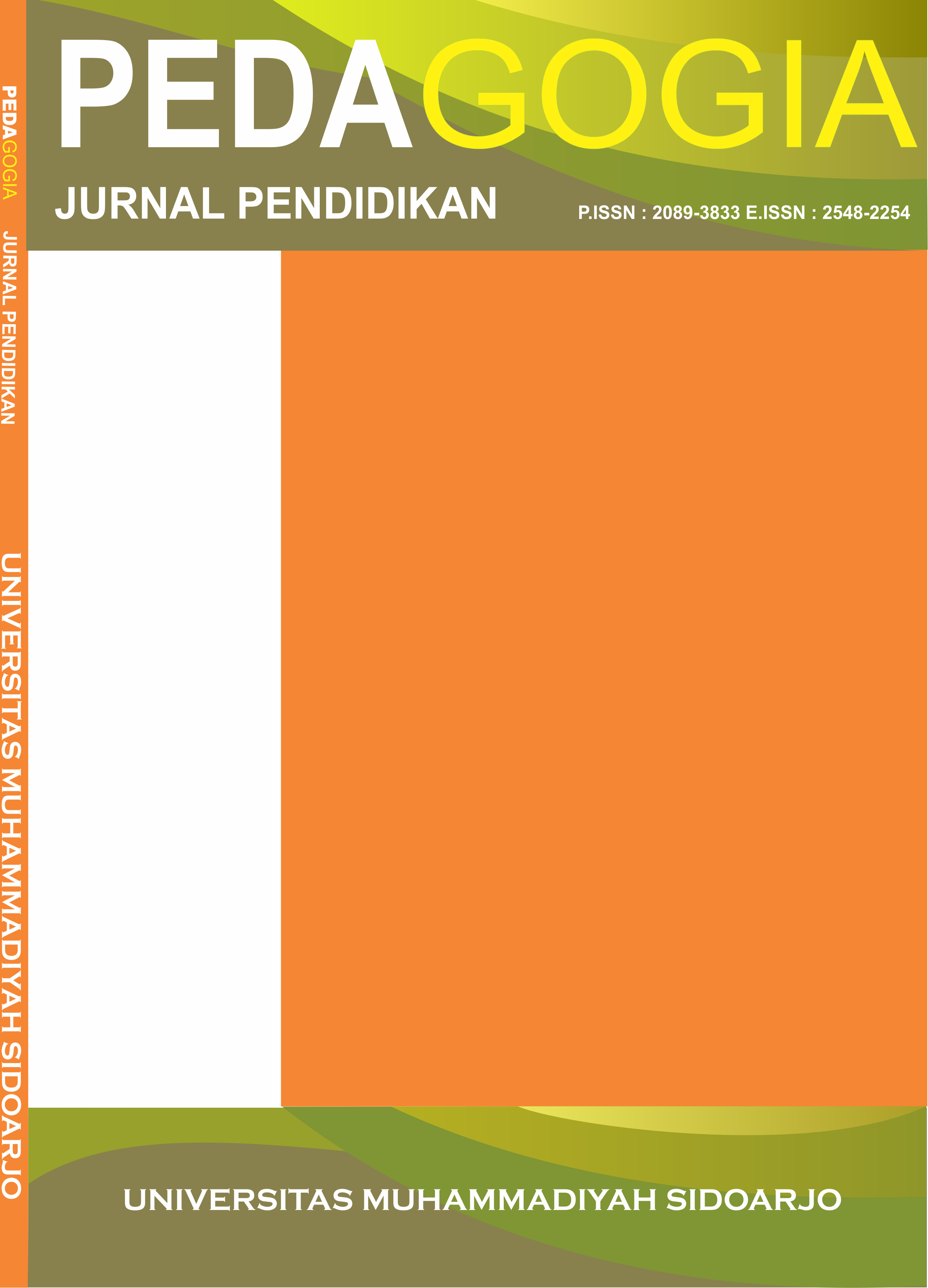Sosialisasi dan Workshop Implementasi Model Pembelajaran RADEC Bagi Guru-Guru Pendidikan Dasar dan Menengah
Dissemination and Implementation Workshop of RADEC Learning Models for Primary and Secondary Education Teachers
DOI:
https://doi.org/10.21070/pedagogia.v8i1.1853Keywords:
Teacher, Primary and Secondary Education, RADEC Learning ModelAbstract
This study investigated the impact of socialization and workshops about the Read- Answer-Discuss-Explain-and Create (RADEC) learning model on teacher readiness to implement it. The investigation involved 92 teachers (elementary school, middle school, and high school teachers). The research instrument was a questionnaire consisting of two parts. The first part questionnaire was given before the activity and was intended to reveal the experience of the teachers to implement currently familiar innovative learning models. The second part questionnaire was given after the activity and was intended to reveal the teachers' readiness to implement the RADEC learning model. Data were processed quantitatively and qualitatively. The research results of the first questionnaire show that teachers had not been able to implement currently familiar innovative learning models for various reasons. The research results of the second indicate that the social- ization and workshop can prepare teachers to implement the RADEC learning model. This can be seen from the majority of those who argue that (1) the syntax of the RADEC learning model is easy to remember and understand; (2) the RADEC learning model can practice 21st century skills; and (3) they are interested in researching the implementation of the RADEC learning model.References
Abidin, Y., Mulyati, T., and Yunansah, H. (2015). Pembela- jaran literasi dalam konteks pendidikan multiliterasi, inte- gratif, dan berdiferensiasi (Bandung: Rizqi press)
Binkley, M. (2012). “Defining Twenty-First Century Skills” dalam Assessment and Teaching of 21st Century Skills (New York: Springer)
Fatchiyah (2016). Pengaruh PBL Terhadap Kemampuan Berpikir Tingkat Tinggi Siswa Kelas V Sd Se-Gugus 01 Kretek. Jurnal Pendidikan Guru Sekolah Dasar 5, 737–745 Fitri, H., Dasna, I. W., and Suharjo (2018). Pengaruh Model Project Based Learning (PjBL) Terhadap Kemampuan Berpikir Tingkat Tinggi Ditinjau dari Motivasi Berprestasi Siswa Kelas IV Sekolah Dasar (BRILIANT: Jurnal Riset), vol. 3
Ivanova, O. (2016). Translation and ICT competence in the globalized world. Procedia - Social and Behavioral Sciences 231. 129 – 134
Kusuma, M. D., Rosidin, U., undefined Abdurrahman, and Suyatna, A. (2017). The Development of Higher Order Thinking Skill (Hots) Instrument Assesment in Physic Study. IOSR Journal of Research & Method in Education 7, 26–32
Lukmanudin (2018). Penguasaan Konsep IPA dan Kemam- puan Menjelasakan Perpindahan Zat Pencemar Maha- siswa PGSD melaui Pembelajaran Read-Answer-Discuss- Explain-and Create. (Tesis). Jurusan Pendidikan Dasar Sekolah Pascasarjana Universitas Pendidikan
Madhuri, G. V., Kantamreddi, V. S. S. N., and Goteti, L. N. S. P. (2012). Promoting higher order thinking skills using inquiry-based learning. European Journal of Engineering Education 37, 117–123
Nurhayati and Angraeni, L. (2017). Analisis Kemampuan Berpikir Tingkat Tinggi Mahasiswa (Higher Order Think- ing) dalam Menyelesaikan Soal Konsep Optika melalui Model Problem Based Learning. Jurnal Penelitian & Pengembangan Pendidikan Fisika 3, 119–126
Sopandi, W. (2017). The Quality Improvement of Learning Processes and Achievements Through the Read-Answer- Discuss-Explain-and Create Learning Model Implemen- tation. Dalam. In Proceeding 8th Pedagogy International Seminar 2017. vol. 8, 132–139
Sukmadinata, N. S. (2010). Metode Penelitian Pendidikan (Bandung: Remaja Rosdakarya)
Trilling, B. and Fadel, C. (2009). 21st Century Skills: Learning for Life in Our Times (San Francisco: Jossey-Bass A Wiley Imprint)
Downloads
Published
How to Cite
Issue
Section
License
Authors retain copyright and grant the journal right of first publication with the work simultaneously licensed under a Creative Commons Attribution 4.0 International License that allows others to share the work with an acknowledgement of the work's authorship and initial publication in this journal.








